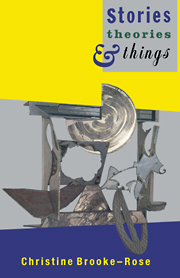17 - Illiterations
Published online by Cambridge University Press: 20 August 2009
Summary
To be an ‘experimental’ woman writer is one thing. To write about the situation of ‘experimental’ women writers is quite another. This will not be a description of specific writers, least of all myself, and their difficulties, but a general, lightly deconstructing speculation on ancient prejudices – and what are prejudices but ill iterations of untenable positions in the face of change? And what can protests against these be but themselves ill iterations?
To be an ‘experimental’ woman writer
Three words. Three difficulties. To be a woman: vast and vastly written up. To be a woman writer: narrower but proportionately ditto.
Assuming that most of the problems described by Elaine Showalter (1971) – and many other studies since – for nineteenth-century writers have disappeared, and that the sexes, like classes and races, have on the face of it the same chances, there are nevertheless different types and levels of critical attention, on a sliding-scale that can be subsumed in the general opposition canonical/non-canonical (or ephemeral). And as Kermode (1979) has shown, only the canonical is deemed worthy of serious attention. Inside the canon interpretation multiplies wildly, while outside it a text does not exist. I would add, the pressure of the canonic is such that the self-allotted task of interpretation is to transform into qualities elements which, in a non-canonic work, would be considered as serious flaws, and this process of canonization has been more consistently applied to masculine works than to the few feminine entries.
- Type
- Chapter
- Information
- Stories, Theories and Things , pp. 250 - 264Publisher: Cambridge University PressPrint publication year: 1991

